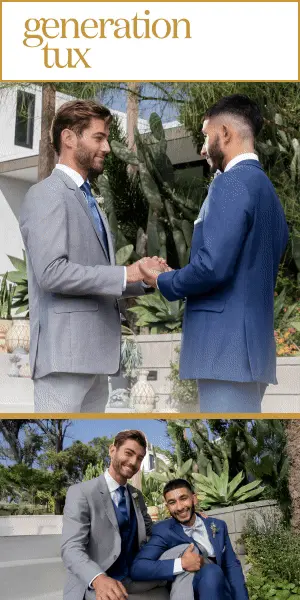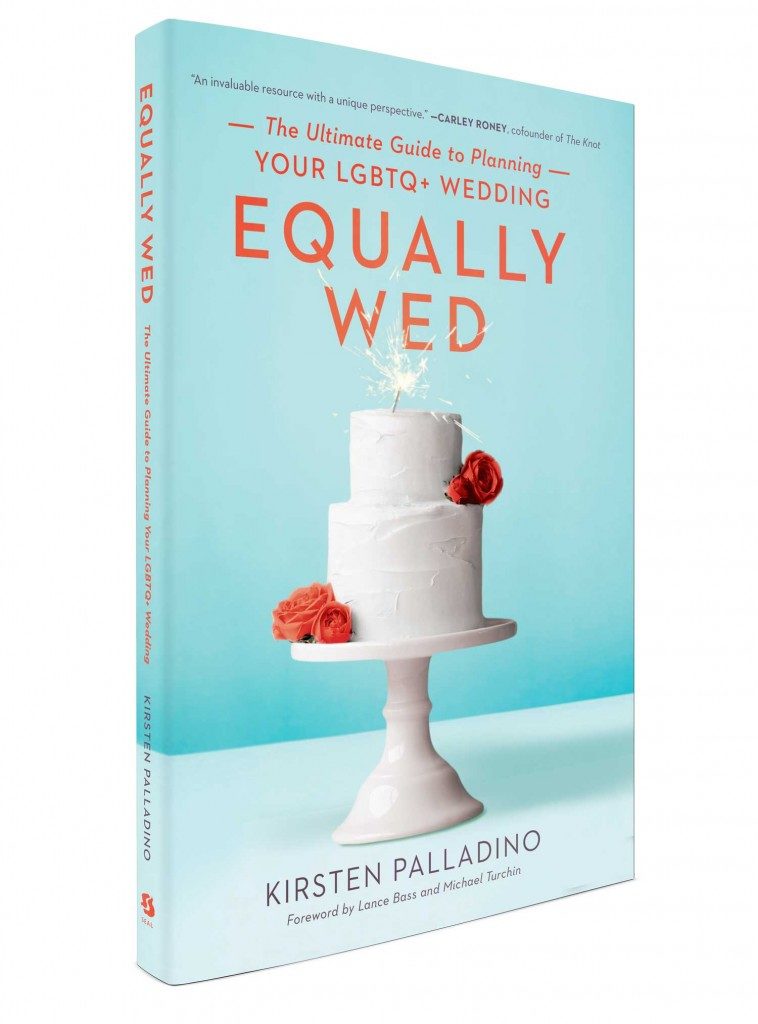By Marc Solomon, National Campaign Director, Freedom to Marry
From The Huffington Post, June 30, 2011
 On Monday, June 13th, I arrived in Albany for what turned into a two-week marathon. From the first day when I — along with fellow advocates — made the recommendation to Governor Cuomo to move the marriage legislation forward, to this past Friday night when I had the honor of standing behind him as he signed the marriage bill into law, the two weeks were full of intensity and nervousness, exhilaration and frustration, and, finally, tremendous joy.
On Monday, June 13th, I arrived in Albany for what turned into a two-week marathon. From the first day when I — along with fellow advocates — made the recommendation to Governor Cuomo to move the marriage legislation forward, to this past Friday night when I had the honor of standing behind him as he signed the marriage bill into law, the two weeks were full of intensity and nervousness, exhilaration and frustration, and, finally, tremendous joy.
How did we pull this historic victory off? Fresh from this triumph, and with lessons from my work in marriage battles from Massachusetts, Vermont, Connecticut and California to draw on, I want to share my best thinking on the components that enabled us to win and what this means for the freedom to marry campaign moving forward.
Years of Sharing Our Stories
First and foremost, this victory came about as a result of years of work and myriad conversations making the case for the freedom to marry. The Empire State Pride Agenda has been leading the way in New York, helping elevate the voices of same-sex couples in every part of the state, engaging hundreds of clergy through their Pride in the Pulpit effort, enlisting organized labor and business leaders to speak up for marriage, cultivating relationships with electeds at every level of government. It’s that persistent, hard work that moves hearts and minds over time, and in New York it had been well-executed. New York also benefited from the work of advocates in neighboring states to secure the freedom to marry — Connecticut and Massachusetts in particular. New Yorkers saw that marriage supported loving and committed couples and families in those states and hurt no one at all. As a result, by this year, a full 58 percent of New Yorkers supported the freedom to marry.
Demonstrating Electoral Strength
The Fight Back New York effort in the 2010 State Senate elections was a definitive game-changer. After the gut-wrenching 2009 loss in the Senate, Fight Back New York — an independent entity led by Gill Action Fund donors and staff — took on both Democrats and Republicans who voted against the freedom to marry. The levels of funds invested ($800,000), the strategic approach used to identify targets and capitalize on their vulnerabilities, and the success in unseating three incumbents, demonstrated that we would be relentless until we had a pro-marriage majority in the Senate. While anti-gay opponents like the National Organization for Marriage and the Conservative Party threaten, our side produced real results — results that we’ve demonstrated we will replicate until the job is done.
Governor Cuomo’s Leadership
Andrew Cuomo’s leadership in advancing this legislation was nothing short of masterful. Never before has a governor taken charge of marriage legislation and steered it through a legislature with such determination, conviction and political skill. During the final intensive two-week period, we met with Governor Cuomo multiple times. Every time, I walked away feeling that we’d win — he was at once a calming force, and a determined leader who developed plans, back-up plans, and contingencies to the back-ups to give us the best shot at ensuring victory. It’s been especially heartening to read in these past few days that Governor Cuomo’s leadership on this issue has bolstered him as a Democratic frontrunner for the presidency in 2016 in the eyes of pundits — we’ve sure come a long way. Yet embracing this cause was clearly important to the governor at a deeper level than the political. To me, nothing demonstrated that more than the fact that he invited his two daughters to the Capitol to witness the history that he was championing. Quite simply, had the governor not taken this cause on as his own or worked it so skillfully, we would not be celebrating right now.
Executing a Republican Strategy
When the Republicans regained control of the Senate in the 2010 elections, the conventional wisdom was that the marriage bill stood no chance. LGBT advocates led by Gill Action assembled a top-notch Republican advocacy team, hiring Jeff Cook — a veteran GOP strategist — to manage the effort, as well as Mike Avella, former chief counsel to the Senate Republicans, to mount the Republican lobbying effort. Freedom to Marry partnered in this effort by, first, engaging John McArtle, the former top adviser to Senate Majority Leaders Bruno and Skelos, to supplement the communications effort and, second, conducting in-district polling using the Republican conference’s main pollster to help show certain Republicans that a pro-marriage vote would not be harmful. Additionally, our coalition enlisted prominent Republican business and political leaders including former Republican National Committee chair Ken Mehlman, financier Paul Singer, and New York City Mayor Mike Bloomberg (who though an Independent is a strong supporter of the Republican conference), to make the moral and political case for marriage to Republican senators. We worked overtime to enlist Republican supporters at the local level to make the case to their own lawmakers. In the end, we together convinced enough Senate Republicans that allowing a vote on the bill and ultimately advancing the bill was both right and politically strategic — the first time ever that a Republican-controlled legislative chamber has voted for the freedom to marry.
New Yorkers United for Marriage Coalition
Freedom to Marry, the Empire State Pride Agenda, and the Human Rights Campaign, along with Marriage Equality New York and Log Cabin Republicans of New York, joined forces to integrate the work each organization was doing on its own. We each agreed to largely subsume our organizational identities to the coalition and combine activities for the greater good of winning marriage in New York. We jointly hired a talented communications firm, SKD Knickerbocker, to coordinate our media efforts; we war-roomed together with the governor’s senior team; and we began true integration of all of the work — lobbying, field, media, “grasstops” mobilization, outreach to electeds and allies. For the last few weeks of the campaign, a core group of us spoke on the phone every morning at 8:30 AM and our communications staff spoke daily for the final month of the campaign. We dealt honestly with organizational interests and did our best to ensure they did not get in the way of the bigger goal of winning.
Engaging Lawmakers in the Field
Our field effort needed to have two outcomes: First, we needed to demonstrate to senators who had not voted with us that large numbers of their constituents supported the freedom to marry. Second, we needed to get couples, parents, and families to sit down with lawmakers and make personal appeals about why marriage matters to them. Our coalition did both tasks powerfully. Led by the Human Rights Campaign’s field team, our coalition of organizations worked together to generate those contacts, ultimately ensuring that lawmakers heard directly from more than 125,000 New Yorkers. This was accomplished through boots-on-the-ground organizing, with close to 40 organizers spread out across the state, from Eastern Long Island to Buffalo and everywhere in between, collecting postcards, organizing phone banks and getting people to call their lawmakers from shopping centers, festivals and churches — wherever people congregated. Several lawmakers pointed directly to the quantity of constituent contacts as a primary reason for changing their vote. In addition, we ensured that each of the lawmakers on our list had sit-down, heartfelt conversations with same-sex couples and their families — a task that Freedom to Marry organizers took on intensively in the last couple of weeks. We prepped family members to ensure they were ready to share their own story with their lawmaker. And as is always the case, these conversations had profound effects on lawmakers as they learned first-hand why marriage is so important to same-sex couples and their families, including those who live in their own communities.
Enlisting Unusual Suspects
New Yorkers United for Marriage made a special effort to demonstrate how mainstream supporting the freedom to marry had become by enlisting some real unusual suspects. From businesses including Xerox, Alcoa, and McGraw-Hill, and the heads of Morgan Stanley, Goldman Sachs, and Citigroup, to an unprecedented number of pro athletes including NBA star Steve Nash, New York Rangers star Sean Avery, and New York Giants great Michael Strahan, our coalition was able to put forward counter-intuitive voices, showing how mainstream the issue had become and giving greater license to moderate senators to change their positions.
Creating the Communications Drumbeat
New Yorkers United for Marriage set a very high bar — to have an announcement every day of the campaign — a key endorsement, a new poll, success in the field work — that we would roll out to newspapers and television stations across the state. In doing so, we literally built our own momentum over the course of several months. We also trained couples in key parts of the state to become media spokespeople so that we could generate human interest stories highlighting the importance of marriage to those couples. We engaged bloggers together and coordinated and shared use of new media tools. In all of this work and our multi-million dollar paid media campaign (consisting of an effective and serious television buy, direct mail into targeted districts, and newspaper ads), the coalition adopted the messaging framework that Freedom to Marry developed based on extensive national research on how to making the case effectively to the “moveable middle” on marriage — messaging that Freedom to Marry is putting into action nationwide through our Why Marriage Matters public education campaign, now shared by partners organizations around the country.
Raising Dollars Locally
New Yorkers United for Marriage expended approximately $2 million on its media and direct mail campaign (not counting the funds that coalition partners put into the push). The vast majority of those dollars came from local, New York sources. New York-based philanthropists observed the governor’s commitment and the advocates’ coordinated efforts, and rose to the occasion in a big way. While out-of-state funds from our movement’s familiar funders were a key part of the effort, they were a relatively small percentage of the total.
Moving Forward in the States
From my own experience on multiple state-level marriage campaigns, I’ve found that there is no ‘one size fits all’ campaign model; each campaign must take into account the political context as well as the relative strengths and weaknesses of the parties involved. What is clear, though, is that that successful campaigns need to incorporate most (if not each) of the above components. A tight-knit coalition capable of building on what the marriage movement has done right and not just reinventing the wheel, consisting of players that are adding real value in accomplishing the crucial elements of the campaign, has proven effective. It’s what Freedom to Marry and our partners achieved in New York, what national and local partners built in Massachusetts, and it’s proving successful in our collective efforts to fend off a repeal of the freedom to marry in New Hampshire.
At Freedom to Marry, alongside our federal campaign to overturn so-called DOMA and our national public education and persuasion campaigns, we have built (and are still growing) the central capacities needed to elevate and assist state-wide campaigns in each of the crucial areas, from strategy development to new media, lobbying to field. We don’t seek to run state-based campaigns ourselves. Instead, we look for state-based and national partners who will join together with us in adding crucial elements to the mix, and work to form tightly knit coalitions to coordinate and manage the battles on each battlefield.
New Yorkers United for Marriage is a terrifically successful model of what that can look like. And while we cannot always control who the governor is, we do know how to put forth our best effort and run smart and winning campaigns. We at Freedom to Marry are eager to carry the New York momentum forward and partner up in the next round of states to bring home more victories. So… let’s go!
Follow Marc Solomon on Twitter: www.twitter.com/MarcESolomon
MOST VIEWED STORIES
- Lemon party inspiration from Engage!25 Santa Barbara
- Your 2026 Wedding Planning Playbook: Decoded from the Year’s Trending Google Searches
- Supreme Court Declines to Hear Marriage Equality Case
- From Swipe to Soulmates: How Daniel & Michael Found Love After a Life-Changing Spinal Cord Injury
- Brighten Your Smile: 5 Teeth Whitening Options for Your Engagement Photos and Wedding Day























